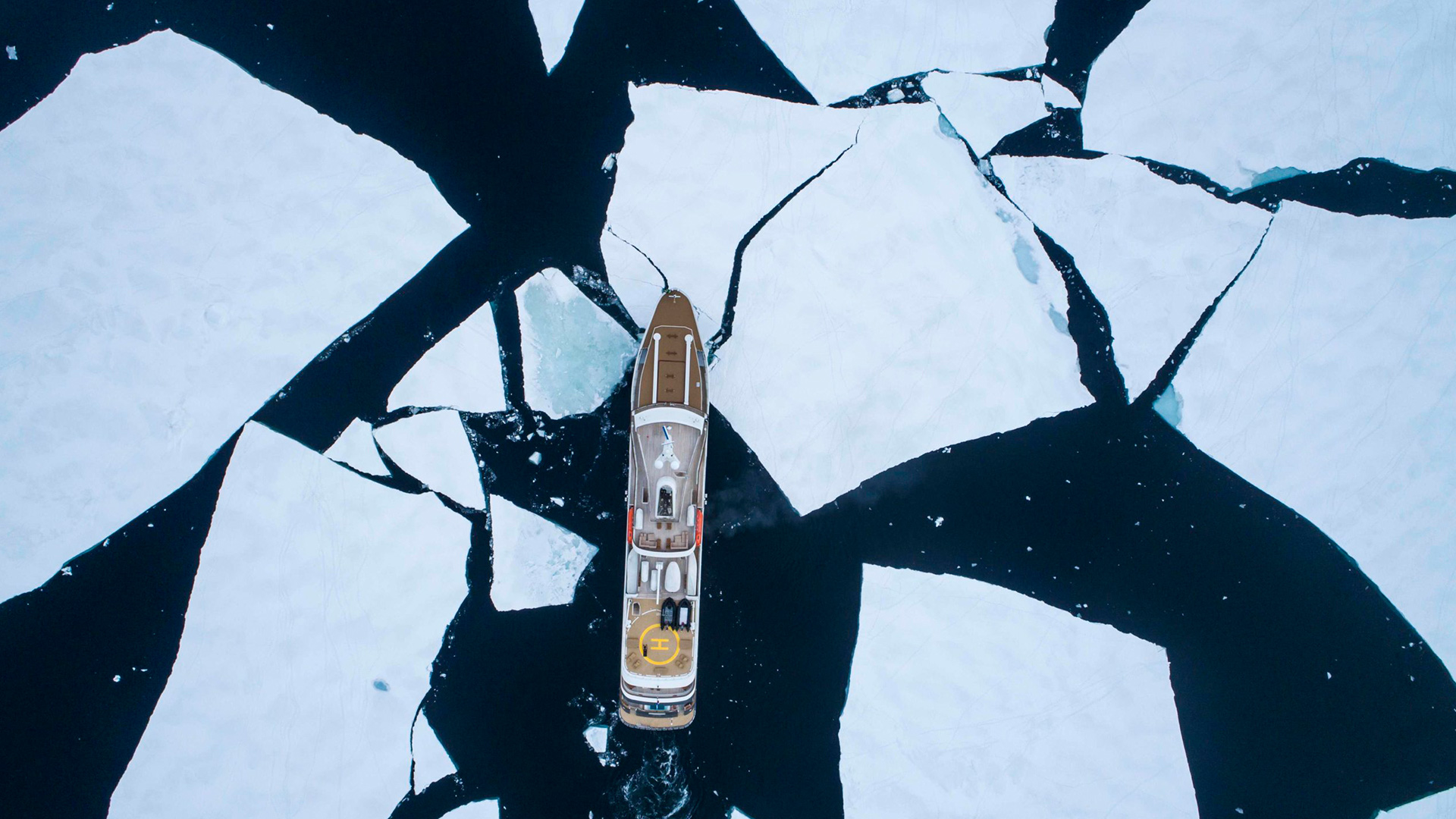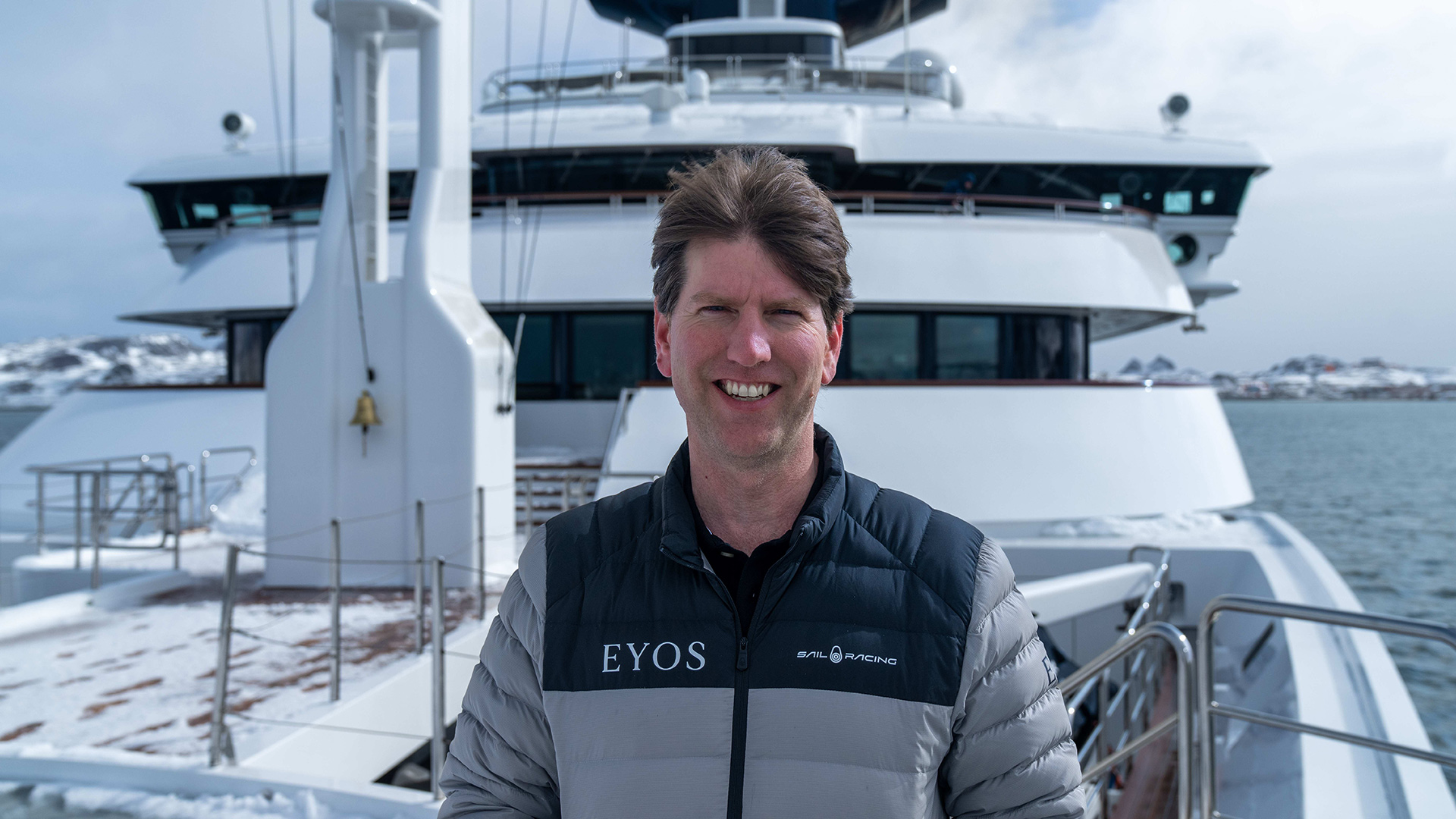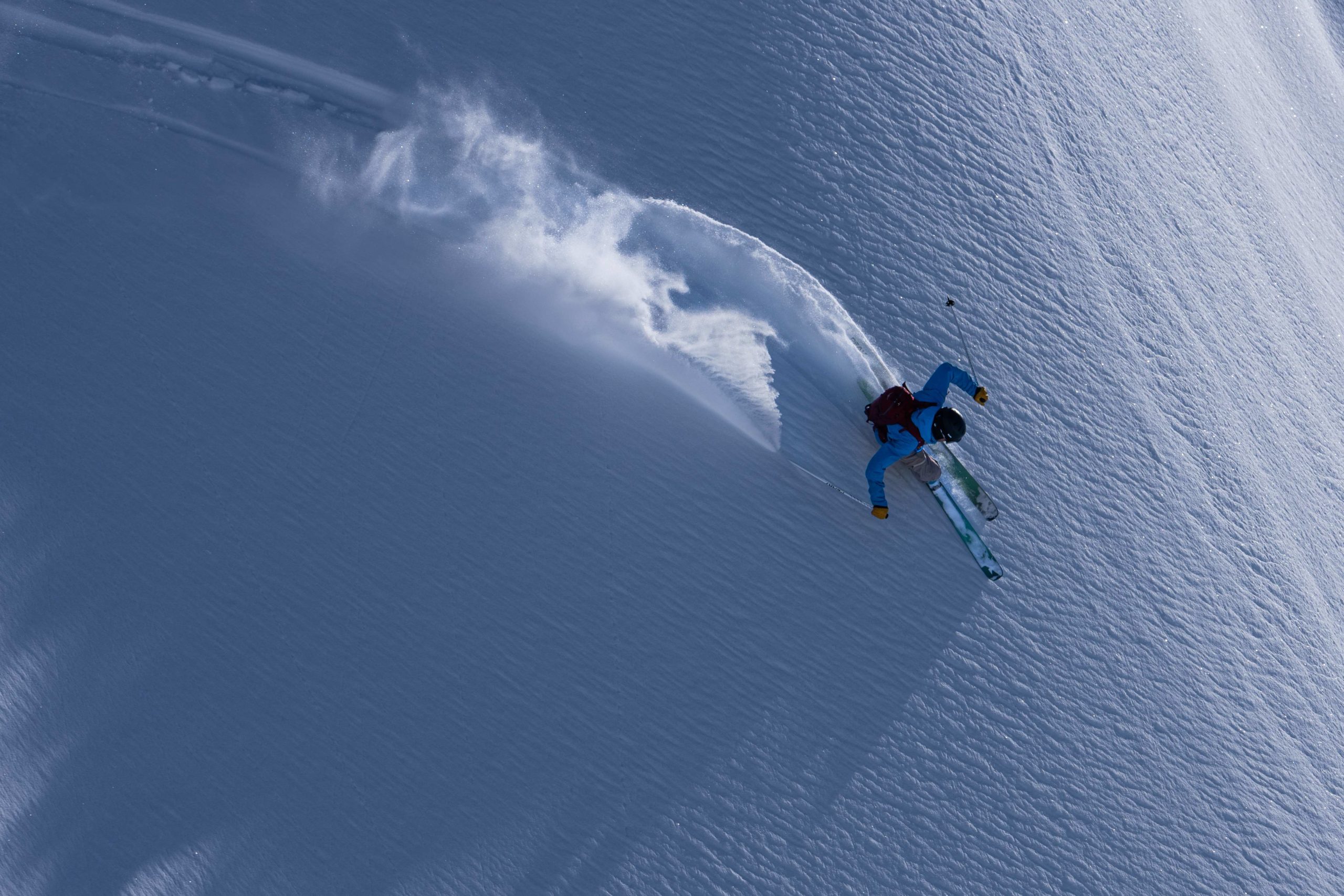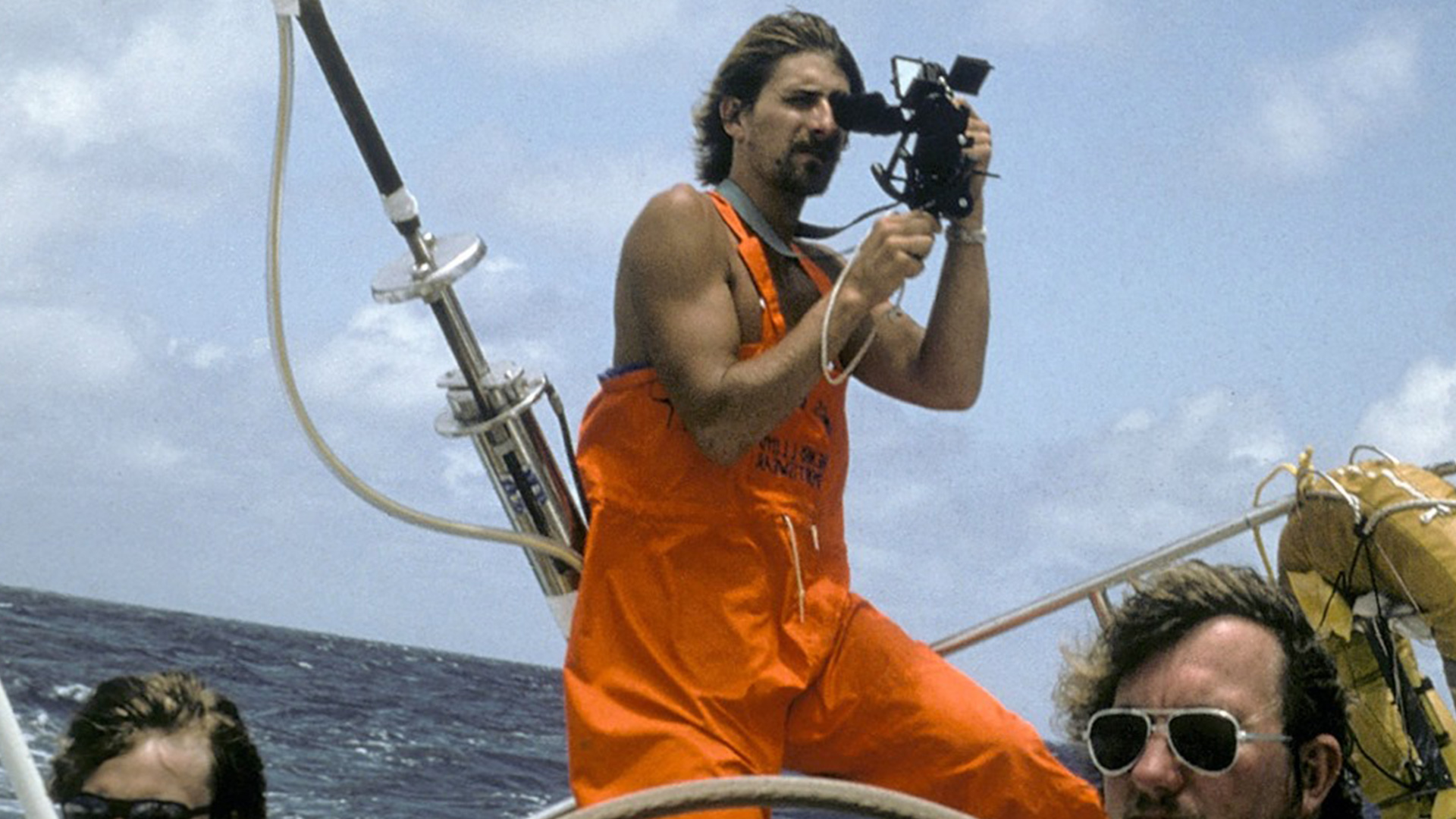EYOS has the rare privilege of being helmed by Ben Lyons, a CEO who has not only worked extensively as an expedition captain, but also still serves as an active ice pilot on trips in the polar regions. Join us for a conversation about how his background on the seas has influenced the ethos of the company and his approach to creating the ultimate expedition experience for clients.
Can you tell us a little about your start in the expedition industry before you became CEO of EYOS?
For my whole life- ever since I was five years old- I’ve been obsessed with ships and the sea. I started volunteering on a WWII Liberty ship in Baltimore when I was 13. Everybody on that ship had gone to the Merchant Marine Academy and they inspired me to pursue a career at sea. I ended up attending the Academy, and following graduation, spent several years working on large passenger ships and cargo vessels around the world. I was an officer on cruise ships sailing around Hawaii as well as cable ships installing fiber optic cable systems. In 2003, however, I was asked to join the build team of Queen Mary 2, then under construction in France and the largest passenger ship in the world. I was the first American bridge officer the Cunard Line had hired in its 160-year history. It was definitely a fulfillment of a lifelong dream for me– I had said even as a child that I would work for Cunard. I ended up spending five years onboard, ultimately leaving the liner as its Chief Officer.
But in 2007, I got an opportunity to travel to Antarctica on a different ship – the National Geographic Endeavour. It was a totally different type of navigation and I knew right away that I wanted to pursue expedition sailing. I left the QM2 to join the Endeavour in a move that many thought was crazy, but it was honestly the best decision I had made professionally. I got back to really driving ships again (as opposed to work on the QM2, which was more administrative as you rose in rank.) On the expedition ships, skill and experience of the Captain and the officers directly impacted the quality of the experience for the guests onboard. Our ability to navigate through the ice and to reach a certain destination, or our knowledge of local waters, or our ability to navigate skilfully around wildlife without disturbing them– all of that had a tangible impact on the trip the guests had, and that was very fulfilling.
After several years bouncing back and forth between the Arctic and Antarctica, I left full-time sailing to pursue my MBA. After graduation, EYOS seemed like the perfect fit, and I had sailed ever since my first trip in Antarctica with EYOS co-founder Tim Soper. EYOS had been around for a few years by then, and I couldn’t believe the things that this little company had done, what a high standard they were operating within, and what an incredible team they had assembled. And of course, it also offered me the opportunity to still be able to do some ice piloting and get out to sea from time to time. So it just seemed like an absolutely natural fit for me.
What is it like to sail through the ice? What are some of the challenges and how do you approach them so as to avoid any major problems?
When you are on an expedition in the polar regions, you are generally going deliberately close to, or in some cases into, the ice. This is a big departure from how conventional mariners view ice! The notion of navigating a ship into ice seems fraught, and of course, it is fraught if you don’t know what you’re doing. Ice piloting is not something that you can just go take a course in and suddenly become an expert. The courses teach you the book level only, but there is a lot that you have to simply experience firsthand in order to learn. (This is why we require all our ice pilots to have over ten years’ worth of experience.) Once you have that practical experience, you can confidently assess the situation– such as knowing which pieces of ice the vessel can come into contact with and which it can not. Not all ice is created equal! Also, many of these areas are not particularly well charted, and the local knowledge can allow you to take a vessel confidently into an area in spite of the poor charts. But because you’ve been there many times before, you have the tools and the techniques to do that.
Another element you are paying close attention to as an ice pilot is understanding weather conditions and patterns. The weather in these polar regions is just so extreme, so knowing how to prepare the yacht and how to react at a moment’s notice helps keep the vessels safe.
Most important is the mindset that while you can plan ahead, you understand that things are certain to change. Your preset program is rarely going to stay as planned. You have to learn to be nimble and to be flexible. And that flexibility, that ability to change the program often results in some of the best experiences for the guests. It’s one of the hardest things that we have to explain to guests, but it’s also vital to ensuring clients get the greatest experience.
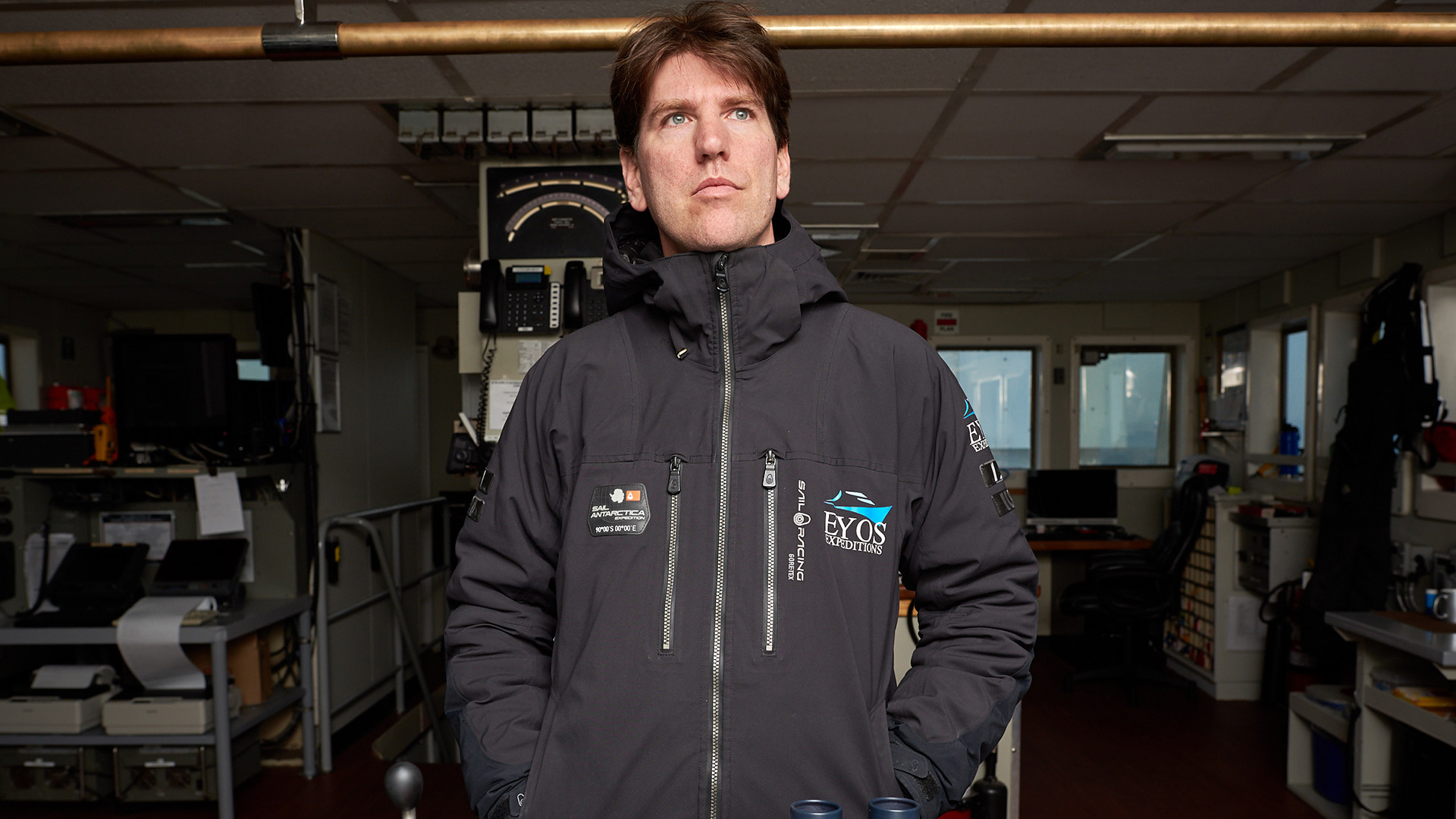
Do any destinations or specific expeditions stick out as particularly exciting from your time as captain?
I am a devotee of the polar regions. I’ve been lucky enough to go to Antarctica every calendar year since 2007. And it’s just one of the things that doesn’t get old. In fact, the more you go, the more you see it anew, the more you see it changing, the more you can appreciate it.
Another one of my favorite trips every year was the transition along the Norwegian coast from Bergen north to Svalbard. I love watching the weather and the landscape change. To go from mainland, cultural Europe and warm summer days to a harsh, polar Arctic region in the space of only a couple of days is so incredibly fascinating.
Based on your experience in navigating the challenging conditions of ice, what excites you about the EYOS team and the EYOS fleet of yachts?
One of the greatest things that I really enjoy on these trips is getting to see the reaction of guests to these amazing destinations. I love watching guests transform as they spend time in Antarctica. There’s sometimes a little bit of curiosity and perhaps even fear at the start– and that turns into love and appreciation by the end of their expedition. Because we’re taking private groups there, you can tailor the experience so that the guests receive the most meaningful experience for them, and come away equally passionate as we are.
I often think to myself, I could have a much easier life if I was working on a ship sailing around the Caribbean, doing the same itinerary week after week. Instead, as an ice pilot at EYOS, you’re taking yachts to some of the most challenging waters that it’s ever going to face in its life. There’s never a dull day in Antarctica, and for the bridge team, it’s exactly the same thing. So I love that constant sense of challenge.
Are there any strategies or approaches you’ve transferred from your time as captain into your role as CEO? What are the similarities between the demands of captaining a ship and captaining a company?
Absolutely – I think captaining a ship has an extraordinary number of similarities. Both are entities and organizations that you are trying to get safely from one point to another. I always think of one of my first arrivals into a port as Captain. We were coming into a small harbor on a remote island off the Scottish coast, and it was covered in thick fog. We had the Prime Minister of Ireland onboard, and she was up on the bridge as we navigated towards the harbor entrance, hidden somewhere ahead of us. It became perfectly clear to me that I should not be the one that’s physically conning the ship; as captain, I need to take a step back and let the officers do that, while I was able to maintain the overall situational awareness without getting caught up in the details of conning.
With a company, you’re still leading a team and need to trust them to do their jobs. Whether as both a captain and CEO, you need to take a step back, keep an eye on the overall situation, and just make sure things are going in the direction that you want. You help your team get through the tough moments and course correct if need be. And experience- actual, practical experience– always makes a vital difference.
